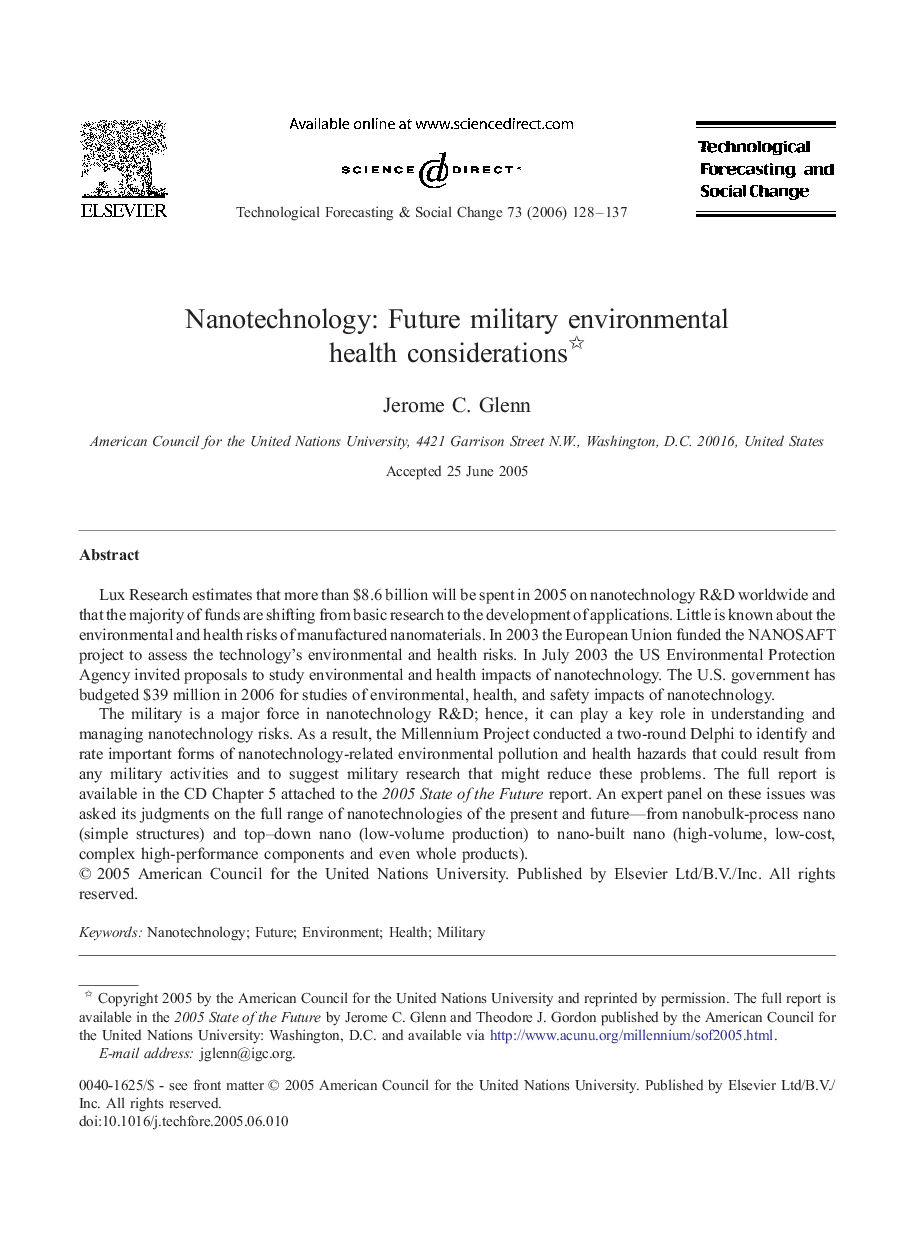| Article ID | Journal | Published Year | Pages | File Type |
|---|---|---|---|---|
| 897521 | Technological Forecasting and Social Change | 2006 | 10 Pages |
Lux Research estimates that more than $8.6 billion will be spent in 2005 on nanotechnology R&D worldwide and that the majority of funds are shifting from basic research to the development of applications. Little is known about the environmental and health risks of manufactured nanomaterials. In 2003 the European Union funded the NANOSAFT project to assess the technology's environmental and health risks. In July 2003 the US Environmental Protection Agency invited proposals to study environmental and health impacts of nanotechnology. The U.S. government has budgeted $39 million in 2006 for studies of environmental, health, and safety impacts of nanotechnology.The military is a major force in nanotechnology R&D; hence, it can play a key role in understanding and managing nanotechnology risks. As a result, the Millennium Project conducted a two-round Delphi to identify and rate important forms of nanotechnology-related environmental pollution and health hazards that could result from any military activities and to suggest military research that might reduce these problems. The full report is available in the CD Chapter 5 attached to the 2005 State of the Future report. An expert panel on these issues was asked its judgments on the full range of nanotechnologies of the present and future—from nanobulk-process nano (simple structures) and top–down nano (low-volume production) to nano-built nano (high-volume, low-cost, complex high-performance components and even whole products).
